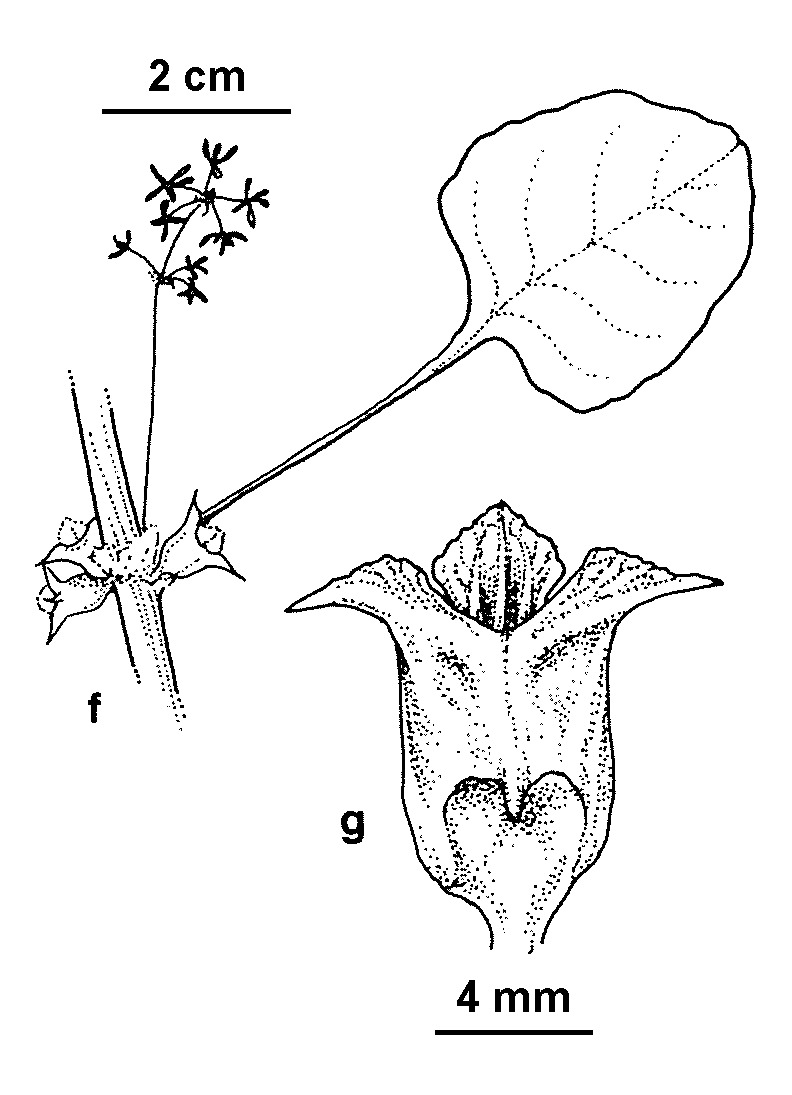Emex
Annual, strongly taprooted, prostrate to weakly erect monoecious herbs. Leaves alternate, petiolate, not articulate, entire; ochreas short, tubular, truncate, brown, membranous, glabrous, soon disintegrating. Male flowers clustered, shortly pedicellate, in short, loose axillary and/or terminal panicles; perianth segments sepaloid, 5 or 6, free, virtually equal; stamens 4–6; female flowers sessile or subsessile in axillary clusters; perianth segments 6, fused in lower part, the outer 3 spinescent, becoming hard, thickened and recurved in fruit, the inner 3 remaining erect, closing over the nut; stigmas 3, flattened, fringed. Nut trigonous to triquetrous, remaining within the enlarged fruiting perianth.
2 species, from the Mediterranean region and southern Africa, both naturalised in Australia.
Sometimes included in an expanded Rumex (e.g. Schuster et al. 2015).
Walsh, N.G. (1996). Polygonaceae. In: Walsh, N.G.; Entwisle, T.J., Flora of Victoria Vol. 3, Dicotyledons Winteraceae to Myrtaceae, pp. 272–295. Inkata Press, Melbourne.
 Spinning
SpinningSchuster, T.M.; Reveal, J.L.; Bayly, M.J.; Kron, K.A. (2015). An updated molecular phylogeny of Polygonoideae (Polygonaceae): Relationships of Oxygonum, Pteroxygonum, and Rumex, and a new circumscription of Koenigia.. Taxon 64(6): 1188–1208.

